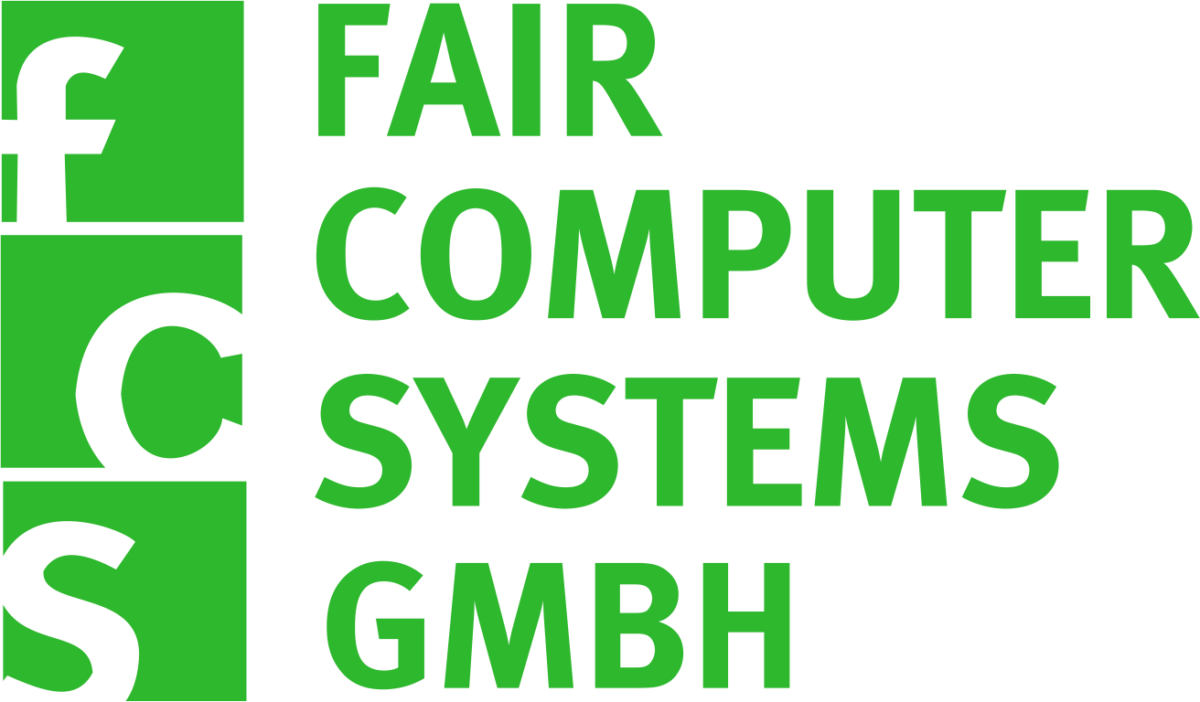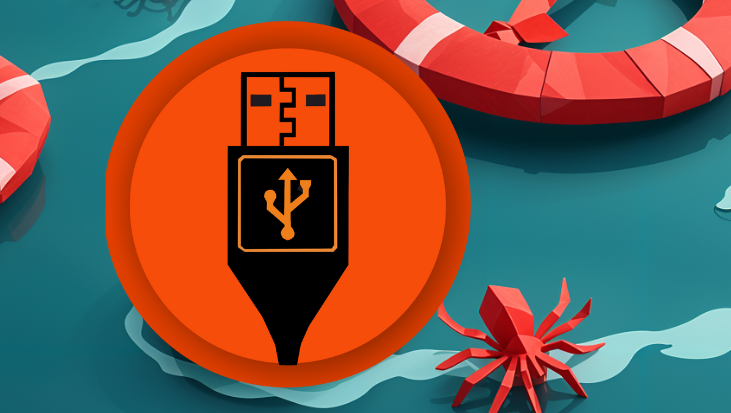Eine Kernkompetenz von Asset.Desk ist der automatische „Scan“ der exakten Hard- und Software sämtlicher IT-Ressourcen.
Dabei ist FCS mit Asset.Desk Vorreiter im Bereich IT-Scanning für Office, Data Center und Clouds. Mit über 20 Jahren Erfahrung im Scanning-Umfeld ist FCS mit Asset.Desk Vorreiter im Bereich IT-Scanning und bietet dabei eine ebenso flexible Lösung wie die Software selbst. Egal, ob im Netzwerk, stand alone, home office, uvm. – wir scannen es.
Scans können automatisch, auf Knopfdruck, über Zeitpläne und autark, auch ohne Netzwerkzugriff erfolgen.
So erhalten Sie vollständige Hardware-Details und Aufschluss über installierte Software immer direkt vom Zielsystem auf Knopfdruck. Folgende Plattformen lassen sich mit Asset.Desk automatisch scannen:
- Windows Desktop und Server
- Linux Desktop und Serversysteme
- macOS Geräte
- IGEL Thin Clients
- AIX und Solaris Systeme
- SNMP-Geräte
- Server-Virtualisierungsplattformen (vCenter, Hyper-V)
- Cloud-Umgebungen (z.B. MS Azure, Office 365, Adobe, Amazon, Google,…)
- Android / Chrome OS basierte mobile Endgeräte
- iOS basierte mobile Endgeräte
Das Scanning lässt sich unterschiedlich konfigurieren:
- automatisch
- zeitgesteuert
- auf Knopfdruck
- beim Rechnerneustart
- nach bestimmter Zeit
Das Scanning lässt sich
unterschiedlich konfigurieren:
- Die agentenlose IT-Inventarisierung schließt Eingriffe in Ihre Systeme aus
- Ausschlusslisten für Objekte, die nicht automatisch gescannt werden sollen
- Importieren Sie externe Daten wie z. B. Mobiltelefonlisten oder fügen Sie Daten manuell hinzu
- Mittels automatisierter Zeitsteuerung verfügen Sie jederzeit über aktuelle Daten
- Individuelle Scanprofile für weitere Details zu einzelnen Scandurchläufen
- Über Online-Verbindungen erfassen Sie alle Firmenstandorte und Kunden vollständig
Bereiche des IT-Scans:
Office IT
- Windows-Scan (mit Agent und ohne Agent)
- SNMP-Scan (ohne Agent)
- macOS-Scan (mit Agent)
- Linux Scan (mit Agent)
- IGEL Scanner / Thin Clients (mit Agent)
- Android / Chrome OS Scanner (App)
- iOS Scanner (App)
Server IT
- Windows-Scan (mit Agent und ohne Agent)
- SNMP-Scan (ohne Agent)
- Linux Scan (mit Agent)
- Solaris für SPARC Scanner (mit Agent)
- Solaris für x86 Scanner (mit Agent)
- AIX Scanner (mit Agent)
- vCenter-Scan (ohne Agent)
- Hyper-V-Scan (ohne Agent)
Cloud IT
- MS Azure
- Google Platform
- Office 365
- Adobe Creative Cloud
- Amazon Web Services
- Hetzner Cloud
- Google Workspace
Ausgelesene Informationen:
Hardware
Hersteller, Typ, Modell, Festplatten, CD/DVD, USB Geräte, Floppy, Peripherie, Drucker, Bildschirme, Treiberdaten, Host- / Domainname, IP- / IPv6-Adresse, DNS, Board, CPU, RAM-Slots / RAM, IDE/SCSI, Partitionen, Bitlocker, Seriennummern, Architekturtyp (32/64 Bit), Cache Größen, uvm.
Software
Installierte Software, Softwareversion, Hersteller, Anzahl installierter Kopien, Dateien / Pakete, Microsoft Office, Produktschlüssel, Produktnummer, Betriebssystem, Servicepacks, Hotfixes, Bios, uvm. Hersteller, Typ, Modell, Festplatten, CD/DVD, USB Geräte, Floppy, Peripherie, Drucker, Bildschirme, Treiberdaten, Host- / Domainname, IP- / IPv6-Adresse, DNS, Board, CPU, RAM-Slots / RAM, IDE/SCSI, Partitionen, Bitlocker, Seriennummern, Architekturtyp (32/64 Bit), Cache Größen, uvm.
Netzwerk
Automatisches Scanning von Hard- und Software sowie Netzwerkinformation der IT-Objekte im Netz
– Mit und ohne Agent!
FCS-Scanner:
Tracker (ehemals Remote Scan)
Ergänzen Sie Asset.Desk Basic um das Tracker Modul, um Windowsgeräte und SNMP-fähige Geräte auf Knopfdruck oder zeitgesteuert von zentraler Stelle aus (remote) auszulesen und deren Hard- und Softwaredaten in die Inventardatenbank zu importieren. Über den Asset.Desk-Tracker spüren Sie die Geräte im Netzwerk über IP-Range, Domänenliste oder Active Directory auf und fassen diese in einer Scanliste zusammen. Objekte, die nicht automatisch gescannt werden sollen, lassen sich leicht in eine Ausschlussliste verschieben. Sämtliche Scans können zeitgesteuert ablaufen, wobei Sie über individuelle Scan-Profile weitere Details zu jedem einzelnen Scanlauf hinterlegen können. Schwellwerte unterstützen Sie dabei, im Auge zu behalten, welche Geräte über einen definierten Zeitraum hinweg nicht mehr erreichbar waren.
Windows-Scan
Alle Windows-Geräte im Netzwerk können remote über WMI (Windows Management Instrumentation) gescannt werden. Der Scan liefert sehr detaillierte Informationen zur Hard- und Software der Zielgeräte.
Dabei werden unter anderem folgende Daten erfasst:
- Hardware-Details wie Festplatten, CPU und RAM,
- Betriebssystem-Informationen, einschließlich der Windows-Build-Nummer,
- Der UEFI Secure Boot Status des BIOS,
- Daten zu angeschlossenen Monitoren, wie Modell und Seriennummer,
- Eine vollständige Liste der installierten Software.
Zusätzlich werden virtuelle Maschinen automatisch erkannt, als virtuelle Systeme markiert und in der Asset.Desk-Datenbank entsprechend angezeigt. Mit diesem Scan behalten Sie den Überblick über Ihre Windows-Geräte – präzise, vollständig und remote.
SNMP-Scan
Der Asset.Desk Tracker-unterstützt beim SNMP-Scan SNMP V1-3. Neben den Basisinformationen können Sie auch individuelle Daten über die MIB-Profile der Geräte auslesen lassen. Hierfür können Sie sich private Profile für die einzelnen Geräte und Baureihen erstellen. Asset.Desk bietet zu diesem Zweck einen integrierten MIB-Browser an.
Der Unterschied zwischen Tracker (Remote Scan) und Asset.Desk Tracker
1. Automatisierte Datenerfassung – Tracker (Remote Scan)
- Der Tracker (Remote Scan) liest alle relevanten Hard- und Softwaredaten automatisiert aus und hält Ihre Daten aktuell.
2. Geräteaufspürung und Organisation – Asset.Desk Tracker
- Der Asset.Desk Tracker lokalisiert alle Geräte im Netzwerk und organisiert sie für weitere Scans.
Gemeinsam unschlagbar: Der Asset.Desk Tracker findet Ihre Geräte, der Tracker (Remote Scan) erfasst die Daten.
Scanning Agent Windows
Anders als beim Tracker (ehemals Remote-Scan) sorgt der Scanning Agent Windows hinter Firewalls und anderen Sicherungsmechanismen der Clients unabhängig von Remote-Zugriffsrechten für umfassende Geräte- und Softwareinformationen. Der Scanning Agent Windows kann beim Rechnerstart, per Zeitvorgabe und sogar auf Knopfdruck die aktuellen Hard- und Softwaredaten sowie Konfigurationsinformationen der Windowsrechner an die zentrale Asset-Management-Datenbank, den Asset.Desk Manager, melden.
Windows Agent PLUS – Für ein Mehr an technischen Daten!
Für alle, die Ihre Geräte bis ins kleinste Detail scannen wollen, gibt es den Scanning Agent Windows PLUS. Er liefert Ihnen zusätzliche Daten von CPU, Mainboard, BIOS, Betriebssystem und RAM – und das bis hin zum kleinsten Detail wie z.B. Package, Max TDP (Verlustleistung in Watt), Technologie (nm), Core VID (Spannung in Volt), Instruction Set, Core Speed, Core Temperature, Bus Speed, Cache Größen bei CPU, ROM Size des BIOS, Spezifikation und Typ der RAM Module etc.
Der Scanning Agent Windows kooperiert mit der Softwareverteil-Lösung Install.Desk: Unmittelbar nach Abschluss eines Verteiljobs wird mit dem Agent ein (Software-)Scan der betroffenen Geräte ausgelöst. Somit ist der neue Softwarestand dieser Geräte verzögerungsfrei in der Inventar- bzw. Asset-Datenbank verfügbar.
Scanning Agent Linux
Der Linux Agent liefert umfassende Informationen zur Hard- und Softwareausstattung Ihrer Linux Rechner, er scannt ebenso wie sein Pendant der Windows-Agent beim Rechnerstart, per Zeitvorgabe oder auf Knopfdruck.
Dabei unterstützt der Linux Agent die Betriebssysteme Novell/SuSE Enterprise Server (Versionen 9, 10 und 11), SuSE Linux Enterprise Desktop (Versionen 10 und 11) sowie OpenSuSE (11 und 12), Mandriva Linux, Red Hat Enterprise Linux Server 5 und 6, Ubuntu, Debian und Fedora. Die Unterstützung weiterer Linux-Derivate wird in Kürze möglich sein.
macOS-Scan
Der macOS Scanner ermöglicht es, die detaillierten Hardware-, Software- und Netzwerkdaten von Apple mac-basierten Endgeräten auszulesen und der Asset.Desk-Datenbank zuzuführen.
Dabei ist der macOS Scanner ein eigener Service, der selbstständig und regelmäßig auf den Apple Zielgeräten läuft und zu diesem Zweck auf den Geräten über den Tracker installiert wird.
So kann der macOS Scanner auf dem Zielgerät Einstellungsdaten empfangen, die dem Client mitteilen, wann, und wie häufig, gescannt werden soll.
Umgekehrt liefert der Client die fertige Scan-Datei an den Server zurück.
Auch lässt sich der Scan vom Tracker aus manuell jederzeit anstoßen.
Der macOS Scanner unterstützt die OS Versionen 10.13.x (x86/x64) bis 10.15.x (x64). Auch die brandneue OS Version 11.0 (Big Sur) wird bereits unterstützt.
(Information: Bis zur Version Asset.Desk 8.10.9 war der macOS-Scanner kein lokaler Dienst und musste auf den Endgeräten installiert werden)
IGEL-Scanner
Der “IGEL-Scanner” ist ein lokaler Service, der die Hard- und Softwaredaten von allen gängigen IGEL Thin Clients automatisch ausliest, vor allem von Geräten der UDx-Serie.
Die Scandaten umfassen neben den umfangreichen Hardware-Daten auch Daten zum Linux Derivat sowie zur Firmware-Version. Daneben werden die installierte Software sowie die installierten Features jeweils mit Version gescannt.
Der Asset.Desk-Tracker verteilt die IGEL-Scanner auf die Zielrechner per SSH und steuert den Scan. Die Scandaten werden im Asset.Desk-Format per Samba zurückgeliefert.
Android / Chrome OS Scanner App
Die Android / Chrome OS Scanner App liest die Hardwaredaten sowie die installierten Software Apps ab Android 6 von den mobilen Endgeräten aus. Unterstützt werden Android-Geräte wie Smartphones und Tablets sowie Chromebooks. Die Scandaten lassen sich als xml-Datei per Knopfdruck oder zeitgesteuert an eine empfangende E-Mail-Adresse vom Mobile aus verschicken. So können die xml-Datei mit den Scandaten anschließend vom Asset.Desk Importer in die Asset.Desk Datenbank eingelesen und im Manager zur weiteren Verarbeitung angezeigt werden. In der Anzeige im Manager werden Android-Geräte und Chromebooks unterschieden. Google Playstore
iOS Scanner App
Die iOS Scanner App liest die Hard- und Softwaredaten von den mobilen Endgeräten mit iOS Betriebssystemen aus, soweit diese auslesbar sind. Unterstützt werden iPhones und iPads ab iOS 8. Die Scandaten lassen sich als xml-Datei per Knopfdruck vom Mobile aus verschicken. So können die xml-Datei mit den Scandaten anschließend vom Asset.Desk Importer in die Asset.Desk Datenbank eingelesen und im Manager zur weiteren Verarbeitung angezeigt werden. Apple App Store
AIX-Scanner
Der AIX-Agent liest die Hard- und Softwaredaten von AIX-basierten Systemen und Servern ab Version 6 aus. Der Perl-basierte AIX-Agent kann per SSH-Session vom Tracker aus auf dem Zielsystem installiert und dort ausgeführt werden. Die Scandaten werden im Asset.Desk-Format per http(s) oder per Samba zurückgeliefert.
Solaris für SPARC-Scanner
Der Solaris für SPARC-Scanner liest Hard- und Softwaredaten von mit Solaris-betriebenen SPARC-Systemen aus. Der Perl-basierte Scanner kann per SSH-Session vom Tracker aus auf dem Zielsystem installiert und dort ausgeführt werden. Die Scandaten werden im Asset.Desk-Format per http(s) oder per Samba zurückgeliefert. Unterstützt wird Solaris ab Version 10.
Solaris für x86-Scanner
Der Solaris für x86-Scanner dient dem Scan von Hard- und Softwaredaten von Solaris-betriebenen x86 Systemen. Der Perl-basierte Scanner kann per SSH-Session vom Tracker aus auf dem Zielsystem installiert und dort ausgeführt werden. Die Scandaten werden im Asset.Desk-Format per http(s) oder per Samba zurückgeliefert. Unterstützt wird Solaris ab Version 11.
vCenter-Scan
Durch die Inventarisierung virtueller Umgebungen wie vCenter (VMware und ESXi) und Hyper-V erhalten Sie alle Daten über Hosts, Gastsysteme und Storage-Strukturen, um in Asset.Desk die Hard- und Software Ihres Rechenzentrums effizient zu managen! Im Falle von vCenter werden die Daten über das VCenter SDK direkt aus der virtuellen ESXi-Umgebung ausgelesen, so dass Sie auch die Hardwaredaten der physikalischen ESXi-Hostsysteme erhalten.
Weitere Produktinformationen: vCenter Scan Flyer.
Cloud Scan
Durch den Cloud Scanner können die Ressourcen aus der MS Azure und der Google Cloud inventarisiert werden. Zusätzlich können mit dem Cloud Scanner auch erworbene Lizenzpläne, Softwareprodukte und berechtigte Benutzer in der Office 365 und Adobe Creative Cloud abgerufen werden. So erhalten Sie einen vollumfänglichen Überblick über den aktuellen Stand Ihrer Software-Abonnements und Ressourcen in der Cloud in einem System.
Azure Cloud Inventarisierung
Inventarisiert werden Ihre Abonnements (Subscriptions) mit den von Ihnen genutzten Ressourcen. Sie legen im Tracker fest, welche Abonnements und welche Ressourcen im Einzelnen gescannt werden sollen. Die gescannten Azure Ressourcen werden in der zentralen Datenbank von Asset.Desk gespeichert und in einer Baumstruktur im Manager angezeigt. Neben dem Abruf der Übersicht über alle Ressourcen werden im speziellen die Daten der Virtuellen Maschinen, der App Services, der Speicherkonten sowie der Datenbanken Ihrer Azure Cloud Umgebung gescannt.
Google Cloud Inventarisierung
Es werden Ihre Abonnements (Projects) mit den dazugehörigen Ressourcen inventarisiert. Die gescannten Google Ressourcen werden ebenfalls in der zentralen Datenbank von Asset.Desk gespeichert und in einer Baumstruktur im Manager angezeigt. Im speziellen werden die Daten der Virtuellen Maschinen, der App Services, der Storages (Buckets) sowie der Datenbanken Ihrer Google Cloud Umgebung gescannt.
Office 365 Lizenzierung
Der Cloud Scanner ruft immer aktuell die von Ihnen abonnierten Lizenzpläne, verfügbaren Services und die jeweils zugeordneten berechtigten Benutzerkonten aus der Office 365 Cloud ab. Sie sehen immer aktuell in Asset.Desk, wie viele freie Cloud Lizenzen in Ihrem Software-Abonnement noch existieren.
Adobe Creative Cloud Lizenzierung
Der Cloud Scanner ruft die von Ihnen erworbenen Softwareprodukte, inkludierten Anwendungen und Services und die jeweils zugeordneten berechtigen Benutzerkonten aus der Adobe Creative Cloud ab. Ebenfalls erhalten Sie in Asset.Desk einen Überblick über die gesamten und die freien Cloud Lizenzen Ihres Software-Abonnements.
Asset.Desk kostenlos testen oder direkt erwerben!
Gerne können Sie ein unverbindliches Angebot oder auch eine persönliche Online-Demonstration anfordern.




